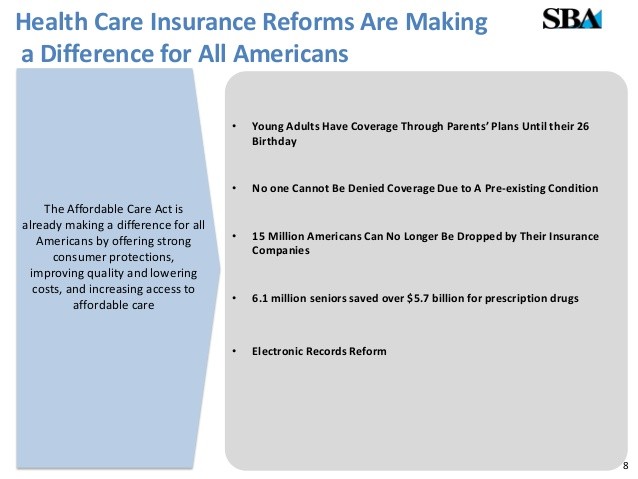How the Affordable Care Act Can Improve the Health of Small Businesses
Post on: 16 Март, 2015 No Comment

Share
The Affordable Care Act (ACA ) gives small businesses the opportunity to provide health benefits for their employees at much lower cost than in the past. Rick Lindquist, CEO of Zane Benefits. says business owners should throw out their old ideas about group health coverage and take advantage of the subsidies and choices offered by the ACA. To help small businesses navigate the process, Lindquist co-wrote The End of Employer-Provided Health Insurance with Zane Benefits founder Paul Zane Pilzer. Zane Benefits provides software and support for small businesses to help them administer employee health benefits.
Once small businesses understand how the Affordable Care Act works, Lindquist says they realize the owner themselves and all the employees can actually get better insurance on the individual market for less money that what group insurance costs. He suggests that the model of the future will be employer-funded healthcare, in which small businesses give their employees financial assistance to purchase health plans through the Health Insurance Marketplace. Because individual plans are often cheaper than group insurance for small businesses, the ACA opens the door to good health coverage for many more small businesses and their employees.
Cap Your Health Insurance Costs
Under the ACA, government subsidies for low-wage earners can make it less expensive for individual employees to purchase their own plans than for employers to provide health insurance.
Let employees buy health insurance like they buy their car insurance and give them the funds to do so instead of offering a one-size-does-not-fit-all group health insurance plan, advises Lindquist.
There are two ways for employers to help their employees buy individual health insurance: through a fixed monthly stipend or through a reimbursement program, in which employees show receipts for their health insurance premiums and you reimburse them for the actual amount paid.
With a stipend, a small-business owner would offer each employee a fixed amount per month to pay for health insurance. Employees who choose to buy a more expensive plan would pay the difference. Those who buy less expensive health insurance get to keep the difference. Lindquist notes that this type of plan is relatively simple to administer.
Under a reimbursement plan, employees provide proof that they have paid their premium each month and the employer reimburses them for the exact amount. If you take the reimbursement option, there are specific compliance requirements that must be met, Lindquist says, pointing out that administering these plans is a bit more complex. It may be a good idea to seek professional advice when setting up either type of plan.
Whichever type of plan you choose, you set the maximum contribution per employee per month. For small businesses that currently offer employees health coverage, Lindquist recommends doing a cost analysis to make sure you contribute an amount that will allow your employees to buy comparable coverage in the individual marketplace. He also recommends working with a broker to help employees navigate the Health Insurance Marketplace.

Healthy Startups
For entrepreneurs in startup mode. health insurance may seem like one more thing you just cant afford right now. Not so, says Lindquist, who points out in particular that the subsidies offered under the ACA make health insurance quite inexpensive for people with low incomes. For example, a single person in California, age 40 with an income of $30,000 per year, could buy a bronze plan for $110 and a silver plan for $208. If that same persons income were $20,000, a bronze plan would cost nothing and a silver plan would be just $84 per month. Sole proprietors can buy insurance on the Health Insurance Marketplace for their state. You can find out what kind of subsidy you qualify for here .
Lindquist urges entrepreneurs to invest in health insurance. The number one reason for personal bankruptcy is medical debt, he points out, adding that, if you have to file for bankruptcy, your company isnt going to go anywhere.
Lindquist says he thinks individual health plans available under the ACA are the wave of the future for large businesses as well. We project, over the next 10 years, employer-provided health insurance is going to go away entirely and be replaced by employer-funded health insurance, he says. Whether or not this prediction comes true, the ACA may help you provide your employees and yourself good health benefits while benefiting your bottom line.
Photo of Rick Lindquist courtesy of Zane Benefits.














